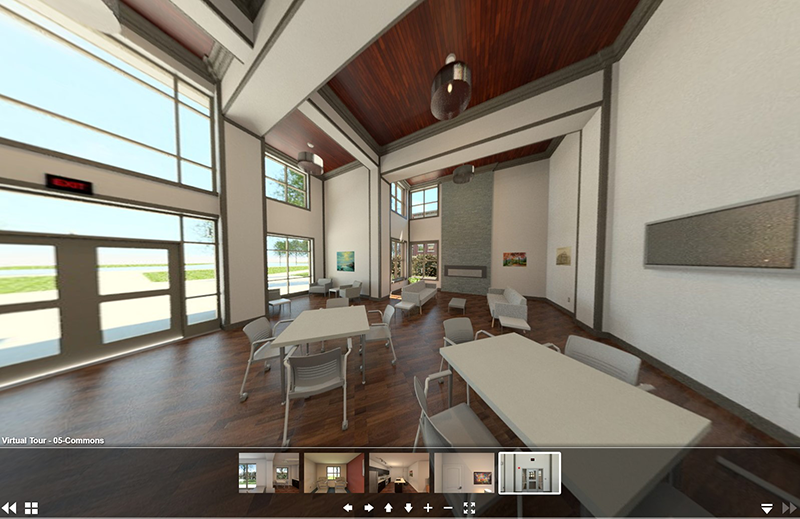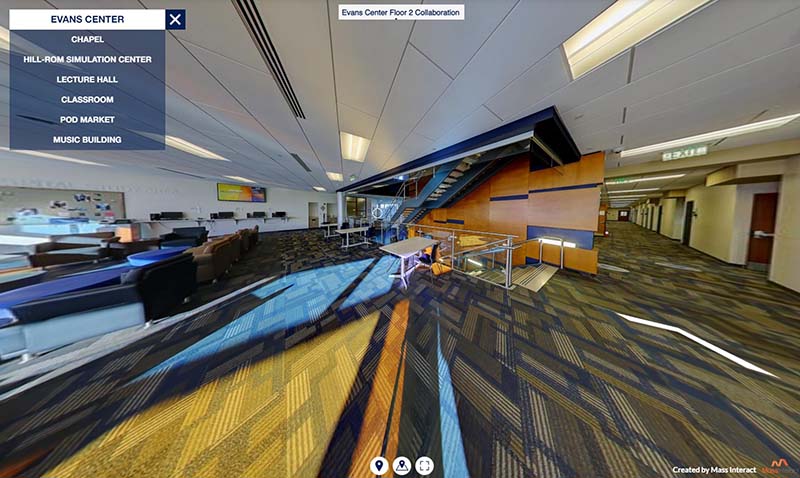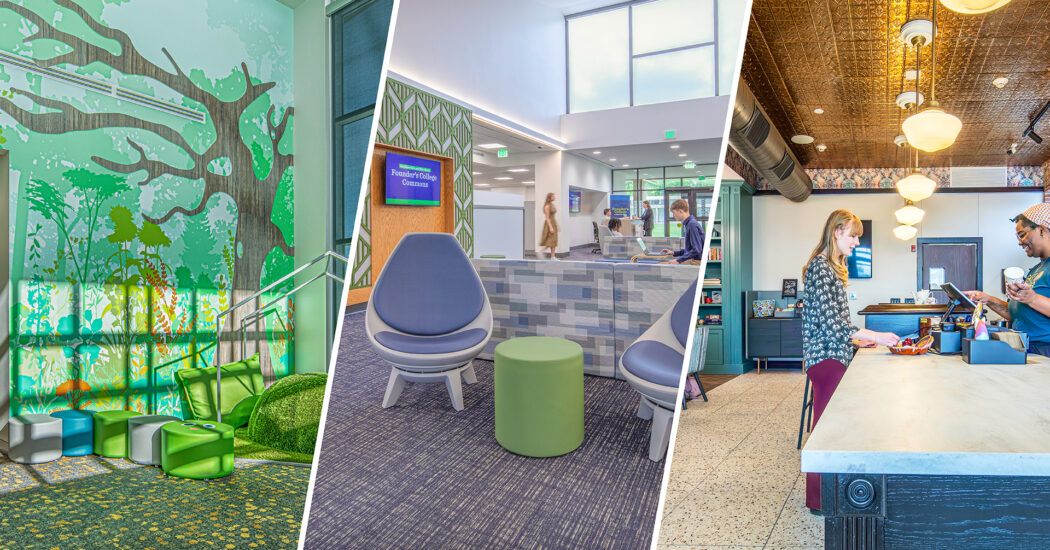Three Ways VR/AR Engages Audiences While Building Consensus
-
Category
Studio-Higher Ed, Innovation -
Posted By
Sara Richey -
Posted On
Feb 17, 2022
Seeing your building project on paper is one step closer to becoming a reality but, thanks to technology advancements in Virtual and Augmented Reality (VR/AR), you can now see a project in 3D and start using it to build consensus, early in the process. This is good news for Owners, but before getting into specifics, let’s first look at what each technology is and what it does.
What Is VR/AR Technology?
VR allows a user to be fully immersed in a computer-simulated reality by being in an environment different from the real world. Earlier this year, Indiana University Professor of Informatics Bernard Frischer developed a fascinating, high-tech VR app that takes users back in time to experience the ancient ruins, further showing one way VR is being used today.
While there are many VR examples, AR offers a different dimension by adding a virtual layer to the real world. Think of Pokémon GO or an Instagram filter. With various immersive tools including headsets and hand controls, both VR and AR can provide an experience of space that simply cannot be communicated, or replicated, through a simple drawing. Now that the differences have been defined, let’s dive into how VR/AR can help higher education Owners build consensus for those multi-million-dollar capital improvement projects, as well as how some campuses are making it part of a larger offering.

Our team uses VR to help Owners visualize spaces.
How VR/AR Engages Audiences
1. Fundraising, and a lot more of it
As a higher education Owner, you know that projects heavily rely on donations from alumni, corporate partners, and the private sector. Creative capital campaigns are mandatory to get your project noticed, and VR/AR images have the potential to help you generate both interest and donations. A simple hyperlink easily embedded into an email, can drop your prospective donors directly into the proposed building or space. After a private “tour,” a secure webpage can easily collect donations. With more organizations competing for disposable income from donors, using VR/AR is an innovative, interactive way to solicit more donations beyond traditional letters, cold calls, or personalized events.

Virtual tour of Greyhound Village
In 2016, the University of Indianapolis unveiled Greyhound Village, an on-campus, upscale, furnished apartment community with a fitness center and social hub. Before breaking ground, the University worked with Schmidt Associates to design the building and developed a 3D model to build excitement about the project. With Google Cardboard, the University was able to attract students, while convincing them to remain on-campus.
2. Targeted Recruiting
The Dean and faculty have communicated they want to compete for the top echelon of students. Facilities, built or in progress, can help attract this cohort of students. To engage prospective students and share information about a new on-campus offering, why not consider introducing VR/AR capabilities to the admissions team? Utilizing digital models and affordable interfaces such as Google Cardboard, the admissions staff can generate a level of excitement with prospective students and their families. Currently, the Michael A. Evans Center for Health Sciences at Marian University, designed by Schmidt Associates, uses VR in their virtual campus tour to highlight building features and student offerings.

Marian University virtual tour
3. Distance, Immersive Learning Opportunities
Beyond fundraising and recruiting, VR/AR can be implemented into existing course curriculums such as at Purdue University where educators are introducing VR into the curriculum for interior design. The University is also leveraging VR within campus labs for student learning and to aid in review assessments. Within the HRD Virtual Lab at the Purdue Polytechnic Institute, students in the Construction Management and Construction Technology programs are learning the art of virtual training simulations by using specialized equipment necessary in various design phases.
It goes without saying that today’s students are accustomed to learning in non-traditional ways, which includes incorporating emerging technology to captivate and hold their interest. The use of VR/AR in everything from humanities to STEM courses can enhance educational opportunities and keep students engaged and connected. Long term, this is a win-win for retaining current and students and attracting new ones, especially when students talk about their positive experiences.
Getting Started
Higher education is quickly evolving with VR/AR technology being a catalyst for future campus improvements, whether through fundraising, recruiting, or classroom structure. While this is great news for building consensus, the better opportunity is when you make VR/AR part of your building design process, then watch your project spring into action.
Like what you read? Contact us.







